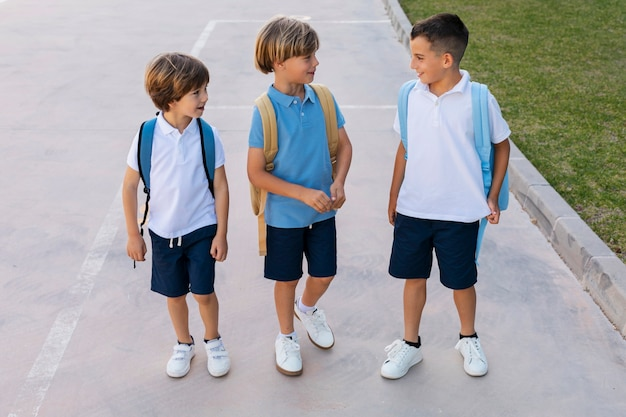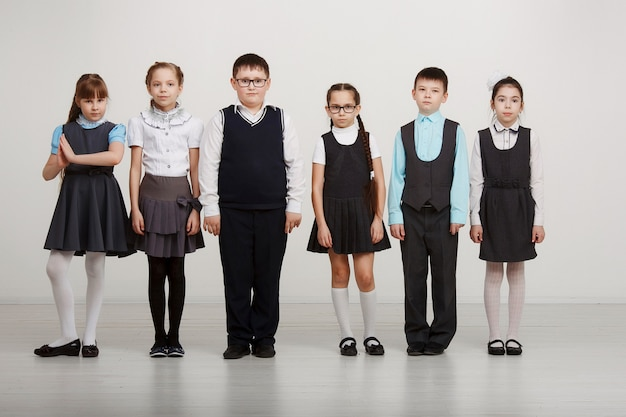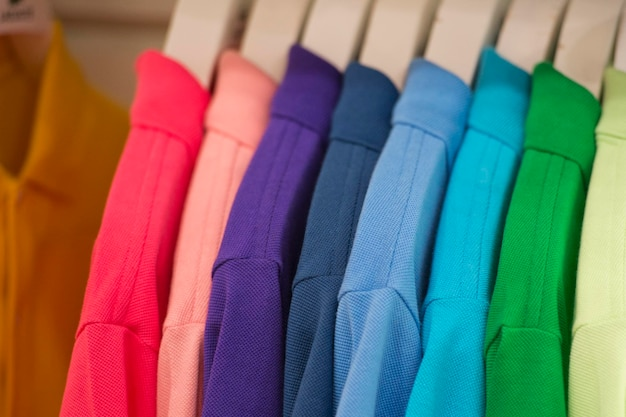For School Pros and Cons of Wearing School Uniforms
School uniforms have been an issue of controversy for years, as educators, students, and parents debate their use. Many private institutions and public schools are increasingly adopting the wearing of uniforms to help unify and discipline students. Many agree that school uniforms are very helpful, while others claim they suppress students' freedom of expression. This paper looks at the pros and cons of wearing school uniforms and the way it affects the behavior, learning, and social interaction of students.
Introduction to School Uniforms
What are school uniforms?
School uniforms are the standardized attires worn by students within an educational institution. These attires usually include pants, skirts, shirts, and jackets, and most of them have the logo or color of the school. The main purpose of school uniforms is to make all students appear equal and to eliminate the various distractions related to different kinds of clothes.
A Brief History of School Uniforms
The earliest recorded use of school uniforms took place in England as far back as 1222, when the Archbishop of Canterbury ordered students to wear a plain robe-like costume called the "cappa clausa." As time passed, the idea began to evolve, and the classic modern school uniform became firmly established during the 16th century. Today, school uniforms are very prevalent in not only private but also a large number of public schools throughout the world, including most states in America.
The Pros of Wearing School Uniforms
Promoting Equality and Reducing Economic Barriers
One of the most identifiable benefits of school uniforms is that they can help all students feel equal. If there are no uniforms, then visible markers of social and economic status can create dividing lines within the student body. Students from more affluent families may be able to afford the latest trends; other students may feel the strain of not being like everyone else. School uniforms help get rid of this inequality by making all students appear the same, regardless of their economic background.
By creating a level playing field, uniforms can help reduce bullying based on appearance, clothing brands, or socio-economic status. In fact, many studies suggest that when students wear uniforms, there is less bullying and social tension related to clothing choices. This fosters a more inclusive school environment where students can focus on academics and building relationships, rather than worrying about how they are perceived based on their clothes.

Improving Focus and Academic Performance
Another compelling reason for adopting school uniforms is the potential impact on students' focus and academic performance. When students wear uniforms, they are less distracted by the fashion trends and peer pressure that often come with choosing their own clothing. Instead, the uniformity of the attire can encourage a more focused atmosphere, where students prioritize their studies over appearance.
Research has shown that schools with uniform policies report higher levels of academic achievement. The Institute of Education Sciences found in a study that schools in uniform showed improvement in academic results by 5-10%. School uniforms eliminate distractions from learning, enabling students to remain focused on their lessons and further enhancing the learning environment overall.
Improving School Safety
Safety is always a top priority for schools, and uniforms play a critical role in enhancing school security. With students wearing the same attire, it becomes easier for school staff to identify who belongs on campus and who does not. This can be particularly important in large schools or during outdoor activities where distinguishing between students and visitors may be challenging.
Moreover, uniforms may work to prevent potential criminal intentions. Studies have reported that schools enforcing uniform policies saw a 30% drop in crime rates, attributed to increased monitoring of students on campus. The fact that students look similar makes it easy to recognize outsiders, thereby fostering security within the school's premises.
Promoting School Identity and Spirit
School uniforms can help create a source of pride and unity amongst students. Wearing a common attire assists in incorporating a sense of belonging by making students feel like one community. This then builds up to more school spirit and pride in the institution.
Many schools include colors, logos, or specific uniform styles that are representative of the school's values or mission. Such a shared identity can be part of a positive school culture in which students feel a connectedness to their school and participate in activities to reinforce school values.

The Cons of Wearing School Uniforms
Stifling Personal Expression
One of the most popular arguments against school uniforms is that they restrict students in their ability to express themselves. Adolescence is an age of self-discovery, and many students use clothes as a means of communicating their personality, cultural identity, or beliefs. Enforcing a uniform, it is argued, deprives students of this important means of expression and may stifle creativity and individuality.
While the use of uniforms may reduce bullying based on appearance, it may also be frustrating for students who feel their personal identity is being suppressed. This may be particularly challenging for students from diverse cultural backgrounds as school uniforms may not always reflect their cultural or religious needs.
Cost Concerns for Families
Despite claims about how school uniforms are the financial savior for schoolchildren, they can actually pose quite a financial burden to the families. The one-time purchase of a full set of uniforms may be highly priced, and, additionally, replacing them after regular use can be very expensive. At times, the uniform expenditures could turn out to be costlier than the other type of clothes, especially if certain brands or specific designs have to be purchased based on school requirements.
For families with a large number of children, the cost of uniforms adds up quickly, thus making it a major financial concern. Some schools have developed assistance programs, but for others, this cost can be a barrier to entry for low-income families.
Limited Comfort and Flexibility
School uniforms are designed to be formal and uniform, but they are really not the most comfortable for students. Some of them may be made from fabrics that are not suitable for all seasons, thus causing discomfort during extreme temperatures. Besides, students may feel restricted with the design of the uniform, especially when this does not appeal to their personal preference in terms of comfort or style.
Conclusion: Should Students Wear School Uniforms?
The debate on whether students should wear uniforms is always hot, with both sides presenting their arguments with great passion. While school uniforms have obvious advantages in terms of promoting equality, improving safety, and enhancing school focus, they also have disadvantages: they limit personal expression and add financial burdens to some families.
Ultimately, the decision to bring in school uniforms depends upon the needs of the students and the specific school concerned. In some schools, uniforms have provided a great environment for a unified and industrious attitude toward academic pursuits. To other schools, flexibility and personal choice could be the greater priority.
FAQs
1.What are the benefits of wearing school uniforms?
School uniforms can reinforce equality, minimize distractions, promote safety in school, and enhance concentration on academics.
2.Do school uniforms help improve academic performance?
Yes, study that shows wearing school uniforms are beneficial for students. It suggest that schools with uniform policies experience improvements in academic performance, often due to reduced distractions and a more focused learning environment.
3.Are school uniforms necessary for all students?
Although many schools use uniforms to create uniformity and unity, all students and schools do not believe that uniforms are called for. It is pretty much dependent on the culture and the community.
4.Can school uniforms promote safety?
Yes, school uniforms make students more easily identifiable and different from others, increasing the security and safety of campus life.
5.Do school uniforms limit student expression?
Some students may believe that school uniforms hamper their potential to be expressive because they cannot wear clothes that would identify them with a certain personality or culture.

.png)








